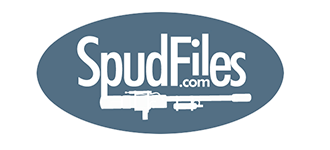Best Sealing Contour - Barrel Sealer
rounded. normally i would yell at someone for this, but thats a rather rare discussion, so i doubt you would have found it.
i think sharpened would cut the neoprene. its ~300lbs on a 2" piston.
i think sharpened would cut the neoprene. its ~300lbs on a 2" piston.
There are rules, and then there are hundred dollar bills.
The best? Here is what I do.
I make the portion completely blunt. I then cut a ring of neoprene out, and put contact cement on both the ring of neoprene and the blunt end of the barrel. Push the two together, and voila, the best sealing surface.
I make the portion completely blunt. I then cut a ring of neoprene out, and put contact cement on both the ring of neoprene and the blunt end of the barrel. Push the two together, and voila, the best sealing surface.
-
Matheusilla
- Specialist

- Posts: 140
- Joined: Tue Feb 13, 2007 7:43 pm
I like rmich's idea, great idea. If you make two identically tapered pieces I'm positive that they will stick together and not work well. Rounded is better. Just think of how they do the valve seat in a sprinkler valve.
- deusXmachina
- Private 4

- Posts: 83
- Joined: Sun Feb 25, 2007 6:06 pm
I'm not sure what you mean by tapered but generally anything other than sealing surfaces perpendicular to the pressure force tend to work out not so well. And as for material, generally what you use for the piston will work equally well for a barrel-end sealing surface.
"On a scale from 1-10, I hope you fall in front of a bus."
:white stuff pours out of piston: "What is that? It looks like milk."
"....<i>Well...</i> it's not milk."
YAAAAAAAAYYYY WE'RE DOOMED!
:white stuff pours out of piston: "What is that? It looks like milk."
"....<i>Well...</i> it's not milk."
YAAAAAAAAYYYY WE'RE DOOMED!
- boilingleadbath
- Staff Sergeant 2

- Posts: 1635
- Joined: Sat Mar 12, 2005 10:35 pm
- Location: Pennsylvania, USA
One might try a taper fit, but I expect it'd be rather hard on the materials involved.
If you have a lathe, though, O-ring seals are good up to nearly 10,000 psi, if done properly, and in static operations (essentially) don't leak. (In sliding conditions, a very thin film of the fluid often makes it's way under the ring, and accounts for a few drops of fluid loss every couple hundred reciprocations)
Admittedly, the seals I generally make aren't good past a several hundred PSI - I usually make the cylinder-piston gap .005" on each side and use 70A rubbers.
A very good resource on O-rings: <a href="http://www.oringsusa.com/html/durometer ... ingsusa</a>
(I've left it open to the page on pressure resistance)
If you have a lathe, though, O-ring seals are good up to nearly 10,000 psi, if done properly, and in static operations (essentially) don't leak. (In sliding conditions, a very thin film of the fluid often makes it's way under the ring, and accounts for a few drops of fluid loss every couple hundred reciprocations)
Admittedly, the seals I generally make aren't good past a several hundred PSI - I usually make the cylinder-piston gap .005" on each side and use 70A rubbers.
A very good resource on O-rings: <a href="http://www.oringsusa.com/html/durometer ... ingsusa</a>
(I've left it open to the page on pressure resistance)
I have used a beveled tap washer as the piston face which fits snugly against a brass fitting placed on the end of a copper barrel. It is a sweat compression fitting with the compression nut left off. The inner edge is a bevel that can be polished smooth and seals nicely with the hard rubber of the tap washer. Generally the higher the pressure used, the harder the piston material can and should be.
The piston will have better sealing properties if it is slightly more cork-like in its fit rather than just flat against the barrel end. Within limits of course. You don't want it actually trying to get stuck in the barrel.
The piston will have better sealing properties if it is slightly more cork-like in its fit rather than just flat against the barrel end. Within limits of course. You don't want it actually trying to get stuck in the barrel.




